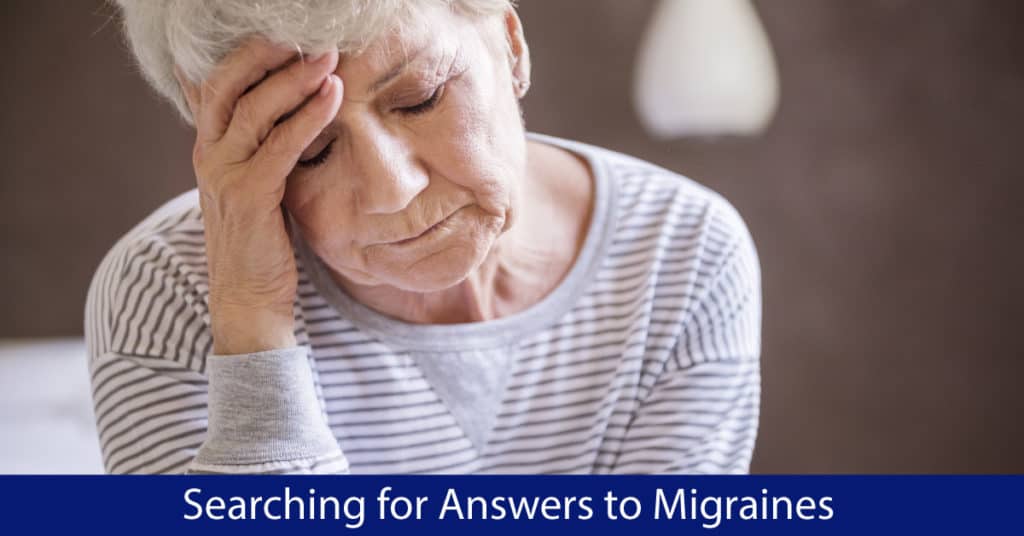Searching for Answers to Migraines

By Kathleen Hoffman, PhD, MSPH
Migraine headaches can be devastatingly debilitating:
When my migraines get so bad, I stare at the wall in complete silence not letting my head touch anything. If my head touches something, it will send more pounding pain throughout my skull.
Migraines are a widespread source of disability worldwide, with one systematic review of US government health studies finding 15.3% of Americans reporting a severe headache or migraine in the past three months.1 Three percent of all emergency room visits are for severe headache. Treating them remains difficult, because the attacks vary from person to person, and even from episode to episode in the same person: Patients report that their headaches vary in their clinical features.2
Inspire’s audience size reflects the broadly shared suffering created by migraines: The 47,900+ audience members have created over 76,000 posts about migraines. Their posts provide a wealth of information about the commonalities and individual variables in migraine experiences and treatment:
I was having [ocular migraines] every day to the point of seeing nothing but grey static, as it were. My neurologist switched me from [treatment] to [treatment] and that has taken care of them for the most part. I also was rx’d magnesium.
Hi I was wondering if anyone had a rise in Thyroglobulin after taking any of the newer class of migraine injection meds ([treatment names]?)
I have been on [treatment] for about 15 years. Problem can only have 9 pills a month. And no more than 2 per day. Recently my nerologist put me on [treatment] 70 mg 1(yes once a month). We just increased it 140mg again once per month. It is an injectable that you do at home. This has cut my migraines by more than half.
In 2019, the FDA approved a new class of drugs based on better understanding of the role of calcitonin gene related peptide (CGRP) as a mediator in migraine. Neural studies revealed that dilated blood cells activated sensory fibers from the trigeminal nerve, conveying pain impulses to the brain. The impulses cause the release of CGRP, which intensifies blood vessel dilation and causes “neurogenic” inflammation. The new drugs are monoclonal antibodies classified as CGRP antagonists, and are the first class of drugs approved as preventative of migraines as well as a treatment for acute migraine.3 Four scientists who were key in revealing this mechanism will be awarded the £1.1m Brain prize from the Lundbeck Foundation in October 2021 — the world’s largest neuroscience award.4
The initially approved CGRP inhibitors were large-molecule monoclonal antibodies, administered by injection. Since then, a group of small-molecule CGRP inhibitors called gepants have been developed, and these drugs can be delivered orally, nasally, and in tablet form. The first generation of these drugs were associated with adverse liver effects, but several 2nd generation gepants have been approved.5 After the role of the trigeminal nerve was discovered, a non-invasive form of treatment, transcutaneous electrical nerve stimulation devices (TENS), have also been approved.6
Studies are guiding more possibilities for intervention
CGRP inhibitors are only one avenue of attack. Better understanding of the pathophysiology of migraine is creating research into possible interventions at all stages of migraine, including studies of migraine auras and investigation into intervening via another common symptom, neck pain.6 A recently published study sought to differentiate types of migraines, with and without aura, by the presence and pattern of areas of white matter hyperintensity in the brains of migraine sufferers.
As migraine treatments undergo development, there will be a continued need to investigate the highly varied symptoms among migraine sufferers, including common comorbidities. Inspire’s large audience provides opportunities to learn what real-world migraine patients experience, and what they value in clinical outcomes. In addition, at Inspire, marketers can reach self declared migraine sufferers looking for treatment information to share with their doctor.
Inspire offers a trusted community to patients and caregivers. Our goal with this blog, this website and our content is to provide the life science industry access to the true, authentic patient voice. In so doing, we support faithful operationalization of patient-centricity. Take a look at our case studies, eBooks and news outlet coverage.
References:
1 Burch R, et al. The Prevalence and Impact of Migraine and Severe Headache in the United States: Figures and Trends From Government Health Studies. Headache. 2018 Apr;58(4):496-505. doi: 10.1111/head.13281. Epub 2018 Mar 12.
2Charles, A. The pathophysiology of migraine: implications for clinical management. Lancet Neurol. 2018 Feb;17(2):174-182. doi: 10.1016/S1474-4422(17)30435-0.
3
FDA. “New Drug Class Employs Novel Mechanism for Migraine Treatment and Prevention.” January 29, 2019. URL: https://www.fda.gov/drugs/news-events-human-drugs/new-drug-class-employs-novel-mechanism-migraine-treatment-and-prevention
4Geddes, L. “Scientists who discovered migraine mechanism win £1.1m Brain prize.” The Guardian, March 4, 2021. https://www.theguardian.com/science/2021/mar/04/scientists-discovered-migraine-mechanism-win-brain-prize
5Tepper, D. “Gepants.” Headache, April 26, 2020. https://doi.org/10.1111/head.13791
6FDA. “Treating Migraines: More ways to fight the pain.” February 23, 2017. https://www.fda.gov/consumers/consumer-updates/treating-migraines-more-ways-fight-pain






